An Evolving Spectacle: The Macy’s Thanksgiving Day Parade Through the Years
An annual cherished American tradition takes center stage as the autumn leaves turn into shades of red and gold. A Thursday in November – the Macy’s Thanksgiving Day Parade. With its gigantic balloons, majestic floats, and a crowd of millions of people, this annual parade has become a timeless emblem of the holiday season and a cultural phenomenon unlike any other.
The rich history of Macy’s Thanksgiving Day Parade is a fascinating journey that began in 1924 in the bustling streets of New York City. Since then, one of the world’s largest holiday parades has continuously reinvented itself. Starting with the live animals from the Central Park Zoo to the high-flying helium giants now dominating the Manhattan skyline.
1924: Macy’s First March
In 1924, the central streets of New York City witnessed the birth of a tradition that would go on to capture the hearts of millions across the nation – the Macy’s Thanksgiving Day Parade. The parade was initially designed as a marketing strategy to celebrate the “World’s Largest Store” and kick off the holiday shopping season.
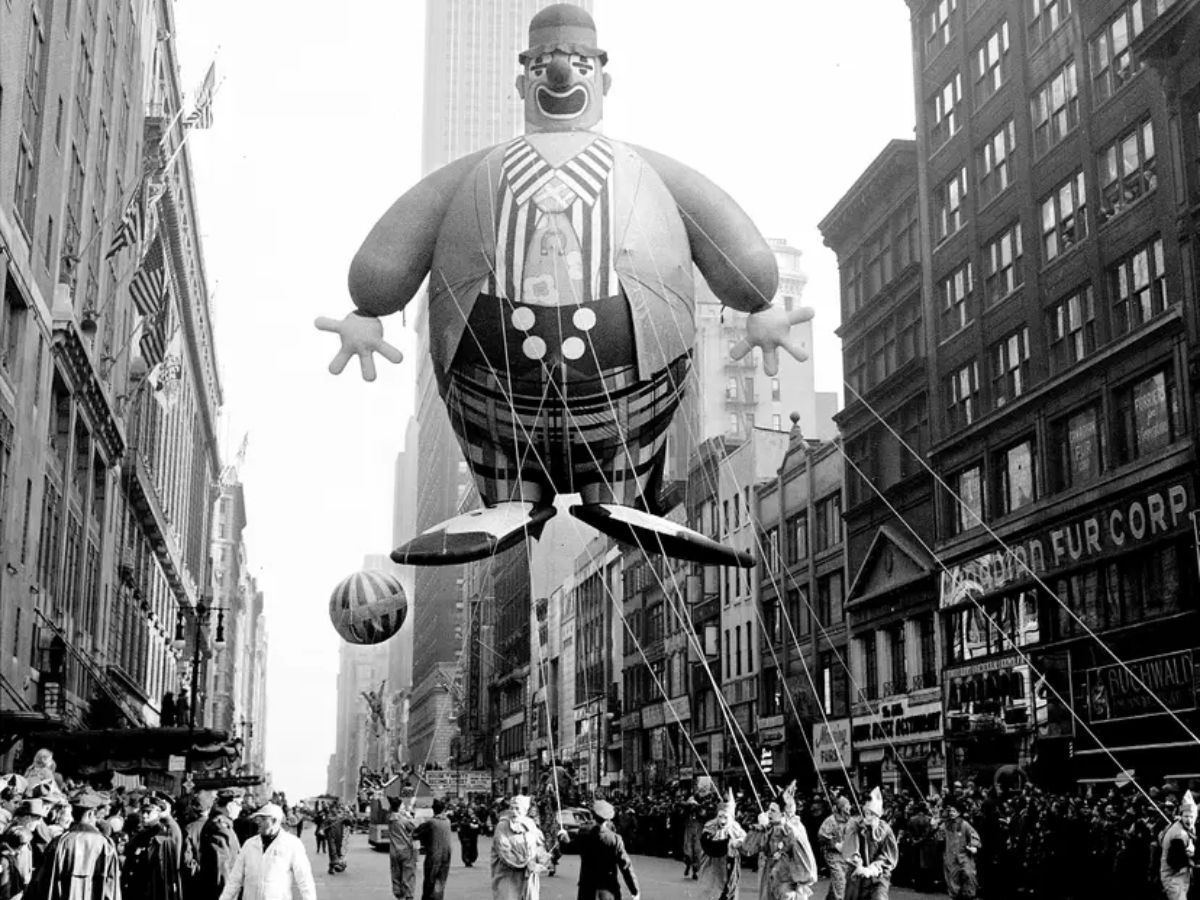
Source: ART WHITTAKER/NY DAILY NEWS ARCHIVE/GETTY IMAGES
The first parade, then known as the “Macy’s Christmas Parade,” was on Thursday, November 27th, 1924. It featured a lineup of live animals from the Central Park Zoo. Elephants, camels, and even lions marched alongside Macy’s employees and made their way from 145th Street and Convent Avenue to Macy’s Herald Square. And upon arrival, there he was waiting. Santa Claus, driving traffic into the Macy’s Department store, marking the official start of the holiday shopping season.
The 1924 parade laid the foundation for an admired American tradition.

Source: Macy's Inc.
Little did anyone know that this holiday gathering would grow into a nationally televised spectacle, capturing the minds of future generations.
1925-1927: Experimenting with Parade Elements
After its debut, the Macy’s Christmas Parade continued evolving in the late 1920s. Central Park Zoo’s animals were the parade stars, but the organizers experimented with new elements to make the event even more captivating.
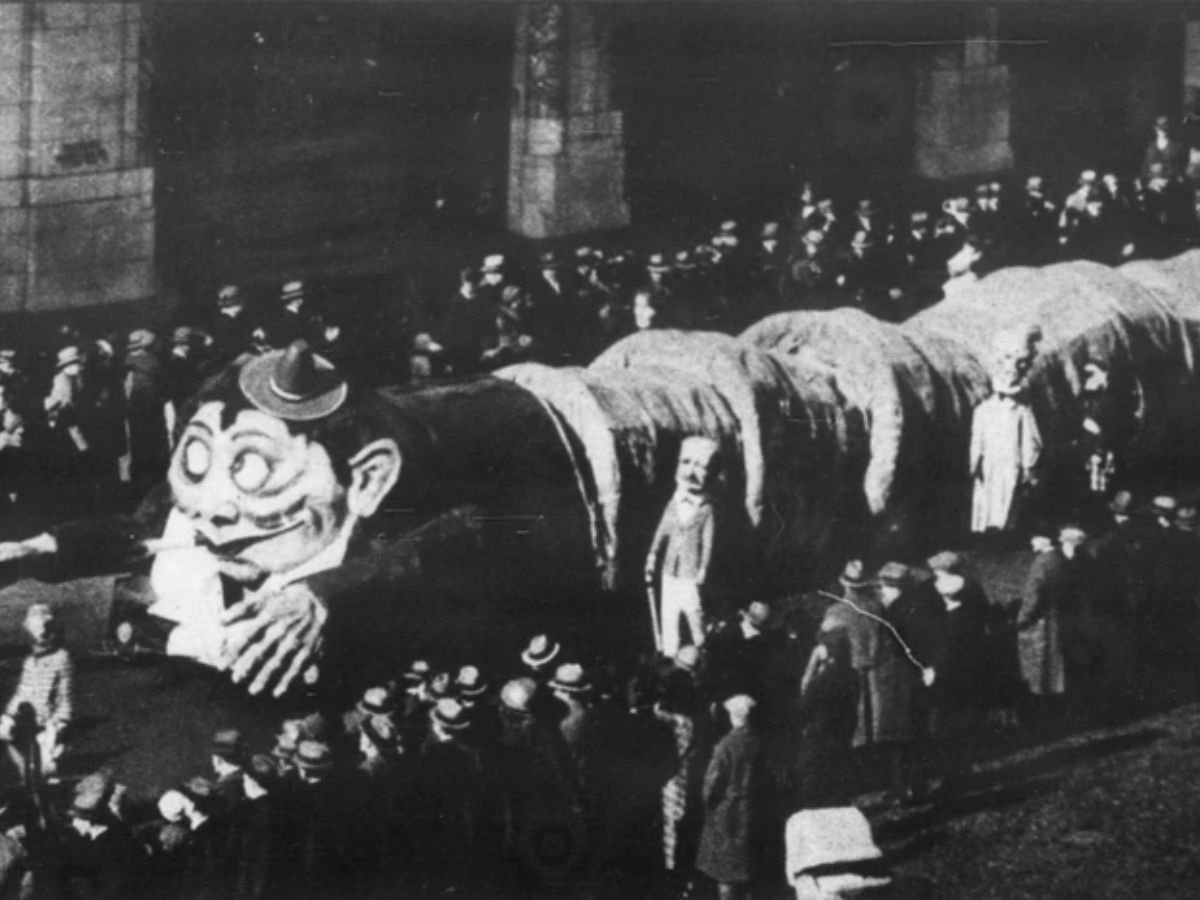
Source: Macy's Thanksgiving Fandom
Macy’s unveiled its original Christmas Parade character in the 1925 parade, Caterpillar Sam. This character featured a human upper body with a caterpillar-like lower torso, allowing him to crawl along the parade route with his impressive 100-foot-long body.
In 1927, master puppeteer Tony Sarg introduced the first character balloon into the parade – Felix the Cat. This giant balloon feline quickly captured the hearts of spectators, marking a significant turning point in the parade’s history. It was a massive hit, and Felix’s appearance set the stage for a tradition of introducing new character balloons each year.
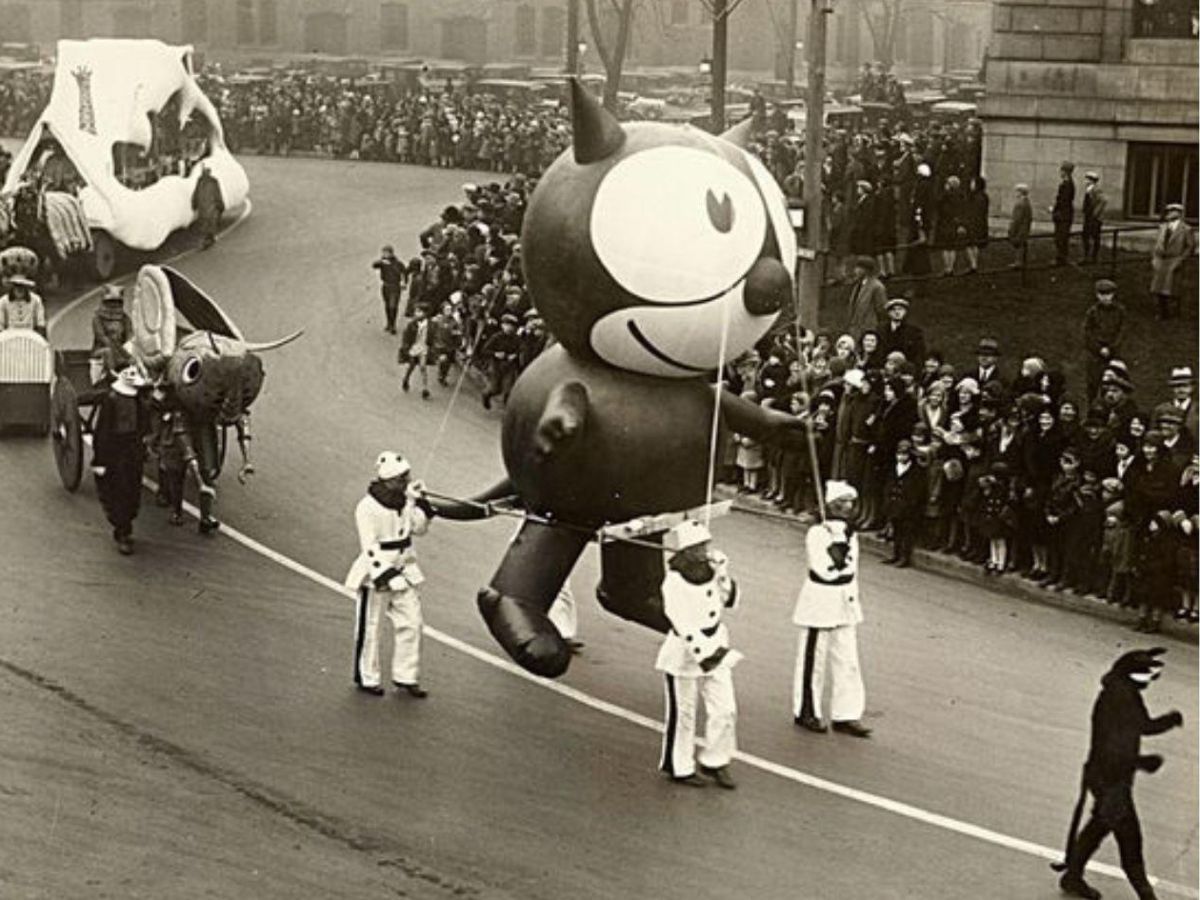
Source: Macy’s Thanksgiving Fandom
Macy’s quickly realized these giant characters were a key to the parade’s success. Consequently, they continued investing in new designs and characters. As a result, Goodyear Tire and Rubber Company became responsible for producing all the balloons for the parade, solidifying its partnership and contributing to the event’s enduring appeal.
1928-1931: Helium Balloons Galore
In 1928, Macy’s Christmas Parade featured 8 new character balloons using helium. Since there was no way to deflate the balloons after the parade, they were set free into the sky.

Source: Macy’s Thanksgiving Fandom
Recognizing the charm of larger-than-life balloons, the organizers introduced a significant innovation at the parade’s culmination point: the release of five giant helium balloons, each valued at $100 upon its retrieval.
The introduction of giant character balloons brought about a series of first major incidents in 1929. The Lap Dog broke free from its leash near 90th Street, while the Turkey Gobbler collided with a No Parking sign at 58th Street and 6th Avenue.
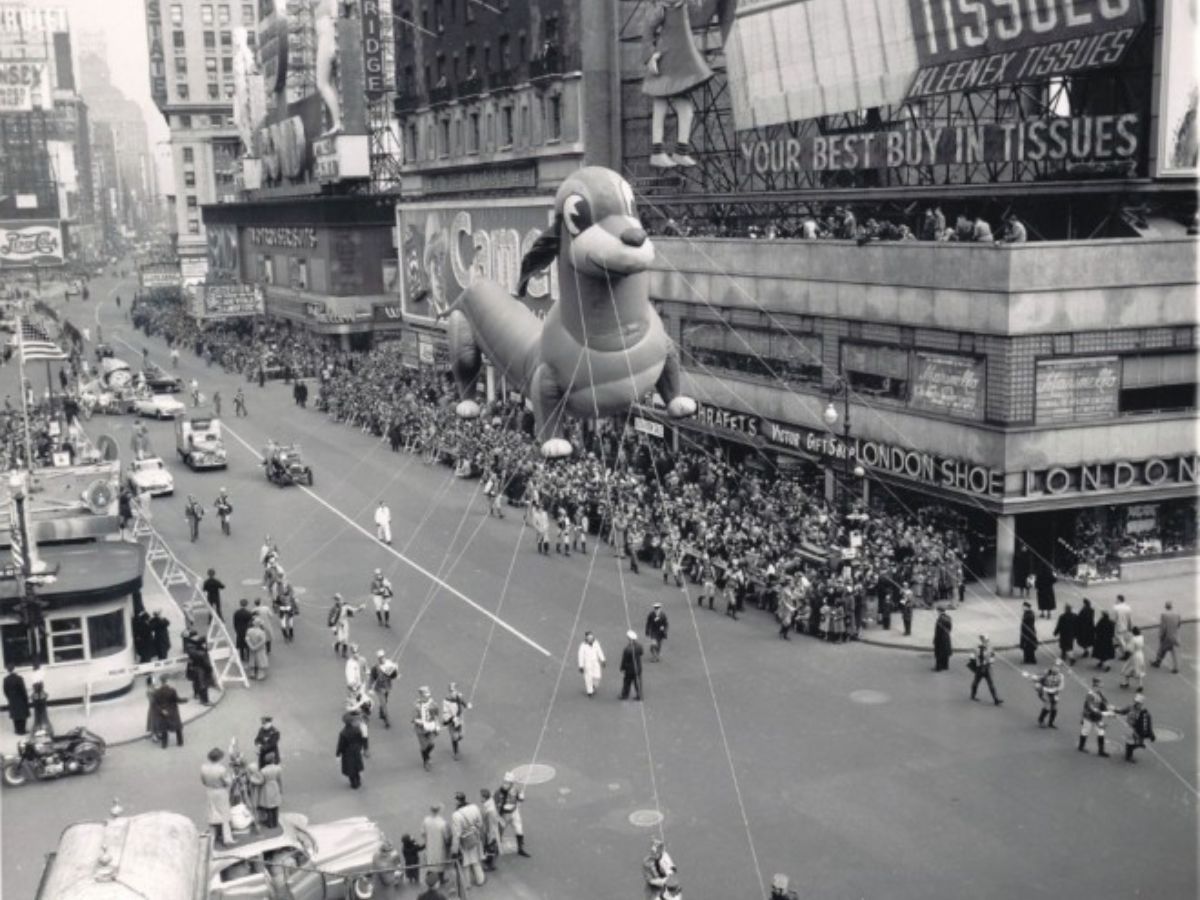
Source: Macy's Inc.
By 1930, the Macy’s Thanksgiving Parade had featured more than 15 helium balloons. But the balloons once again caused some trouble. Terrible Turk collided with an electric sign at 72nd Street. Then, as the parade concluded and The Cat balloon was released, it accidentally hit a telephone wire and burst into flames.
1932-1939: Macy’s Overcoming Challenges
In the midst of the Great Depression, the parade faced economic challenges, much like the rest of the nation. However, despite financial constraints, Macy’s remained committed to maintaining the parade’s tradition.
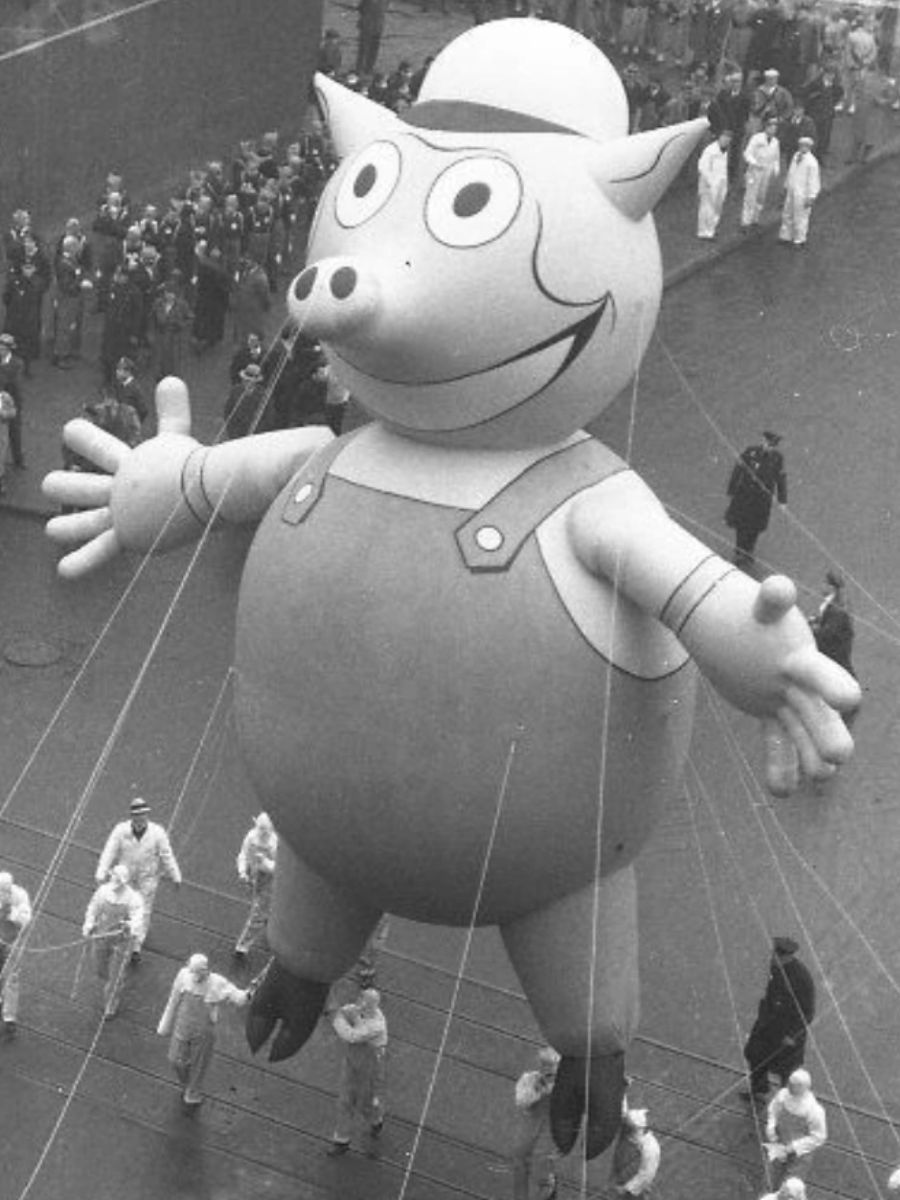
Source: Macy’s Thanksgiving Fandom
For example, the 1932 parade marked a major milestone with the first radio broadcast of the Macy’s Christmas Parade. This allowed people to listen to the festivities from the comfort of their own homes, expanding the reach of the parade beyond the streets of New York City.
In 1934, Macy’s introduced celebrity appearances, with singer-actor Eddie Cantor joining the parade that year. It was also the first year for units sponsored by the Walt Disney Company, which comprised most of the parade’s lineup. Mickey Mouse, The Little Pig, Pluto, Horace Horsecollar, and The Big Bad Wolf – all added a magical touch to the march. Furthermore, the event we now know as the Macy’s Thanksgiving Day Parade was officially renamed in 1935, marking its enduring legacy in American holiday tradition.
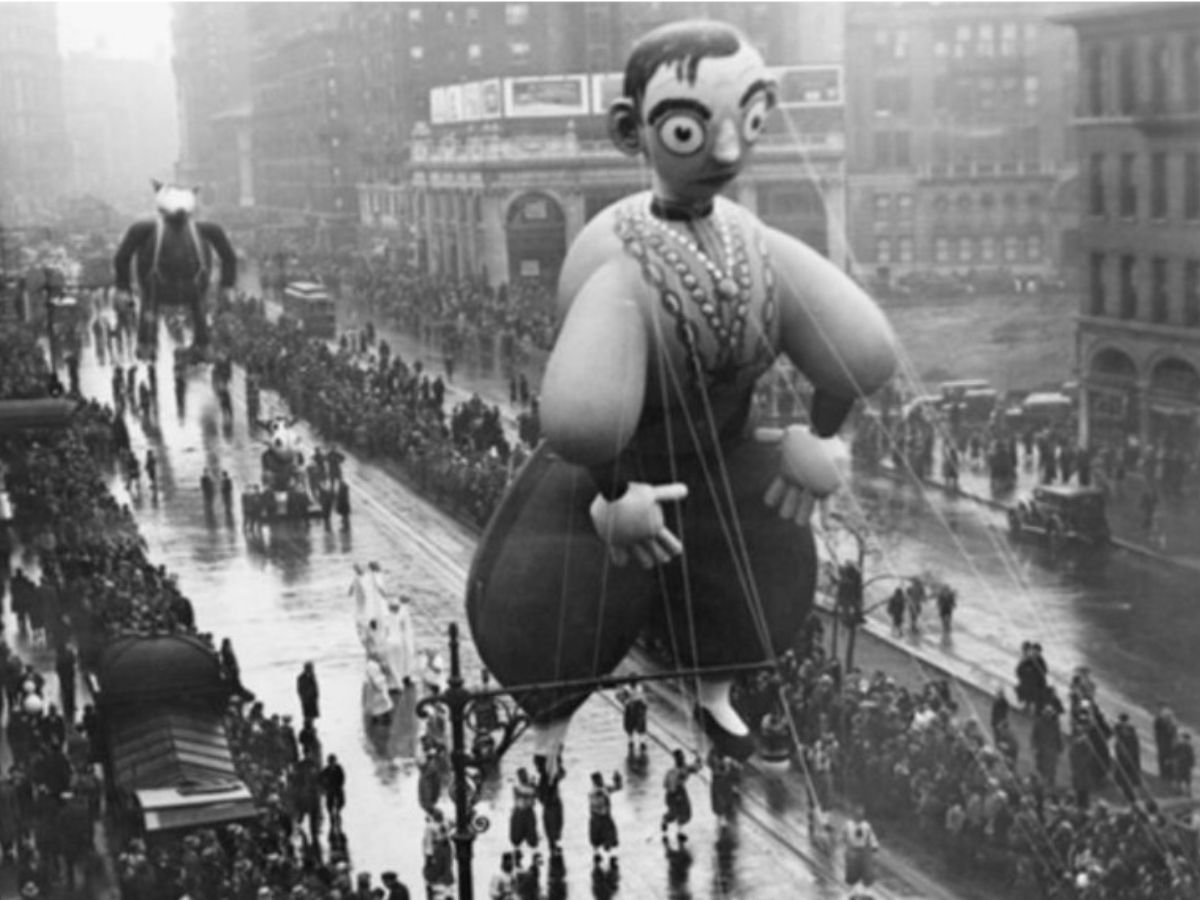
Source: widewalls / Macy's Inc.
In the 1930s, a notable innovation was introduced: the balloon handlers. Macy’s devised a solution to prevent the giant helium balloons from bouncing into buildings and utility poles. The parade’s organizers assembled teams of balloon handlers who would walk alongside the balloons, tethered with ropes to ensure control. This innovation improved safety and became a standard practice that still persists today.
1940-1945: Macy’s Thanksgiving Day Parade at War
The 1940s brought significant misfortune to the world, and the Macy’s Thanksgiving Day Parade was not immune to the effects of World War II. Despite difficulties, Macy’s parade continued to provide solace and joy for Americans. Patriotic symbolism took center stage in 1940, with the parade’s elements showcasing the nation’s unity and resilience during tough times.
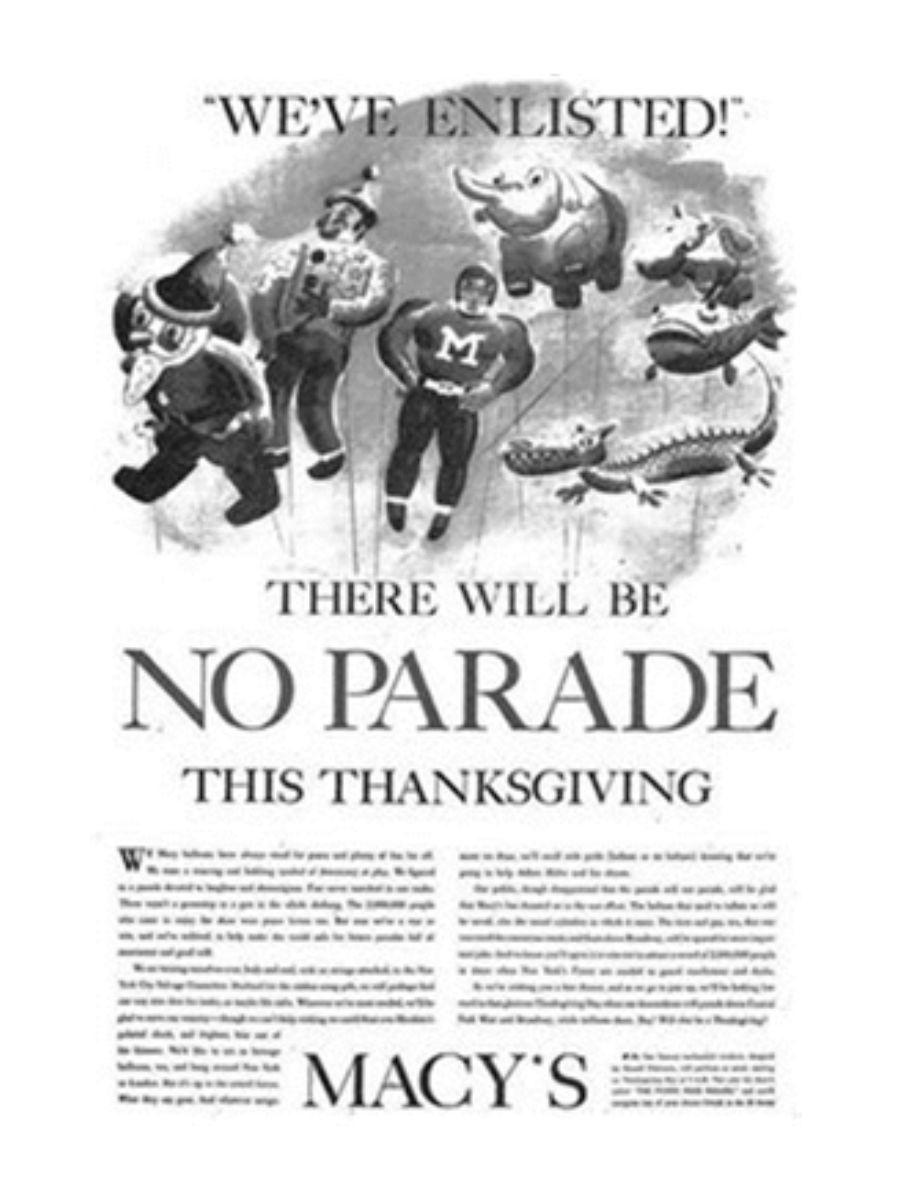
Source: 1942 Macy’s advertisement / Macy's Inc.
However, the 1941 event turned out to be the final Macy’s Thanksgiving Day Parade before its temporary pause due to World War II. Instead of the traditional holiday parade, New York had known for over 15 years, the streets now echoed with military parades, such as the poignant ‘New York at War.’
As the war ended, the 1945 parade symbolized a return to normalcy and a celebration of victory. It played a role in welcoming soldiers back to American soil, offering a sense of comfort and relief after years of hardship.
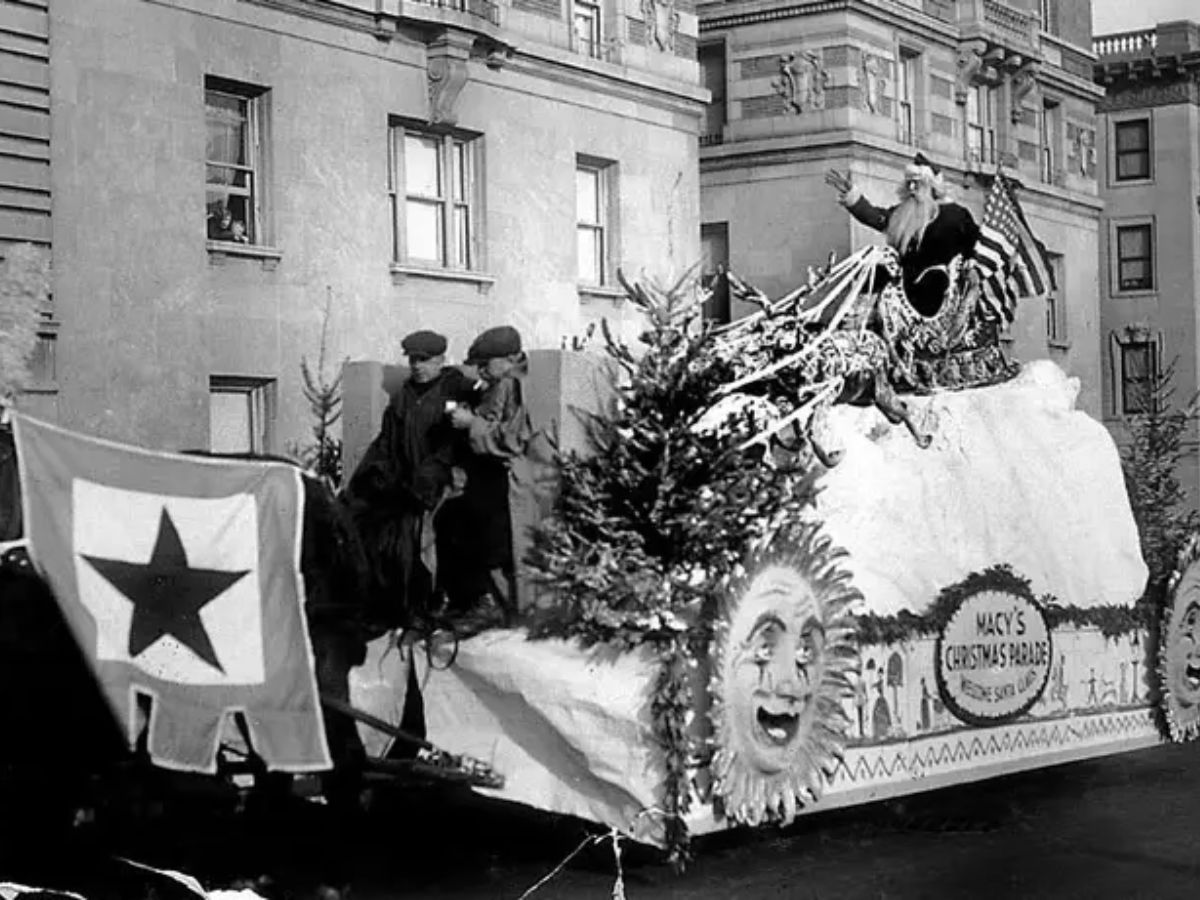
Source: Macy's Inc.
This post-war parade was of utmost importance, featuring the iconic helium balloons, 17 different floats, musical bands, and, of course, the heartwarming arrival of Santa Claus.
1946-1950: Post-War Resurgence
As the United States emerged from the darkness of World War II, the Macy’s Thanksgiving Day Parade resumed its traditional format with renewed enthusiasm. The 1946 parade marked a historic moment as it adopted the famous Parade Route. It began at 77th Street and Central Park West, concluding in Herald Square in front of Macy’s.
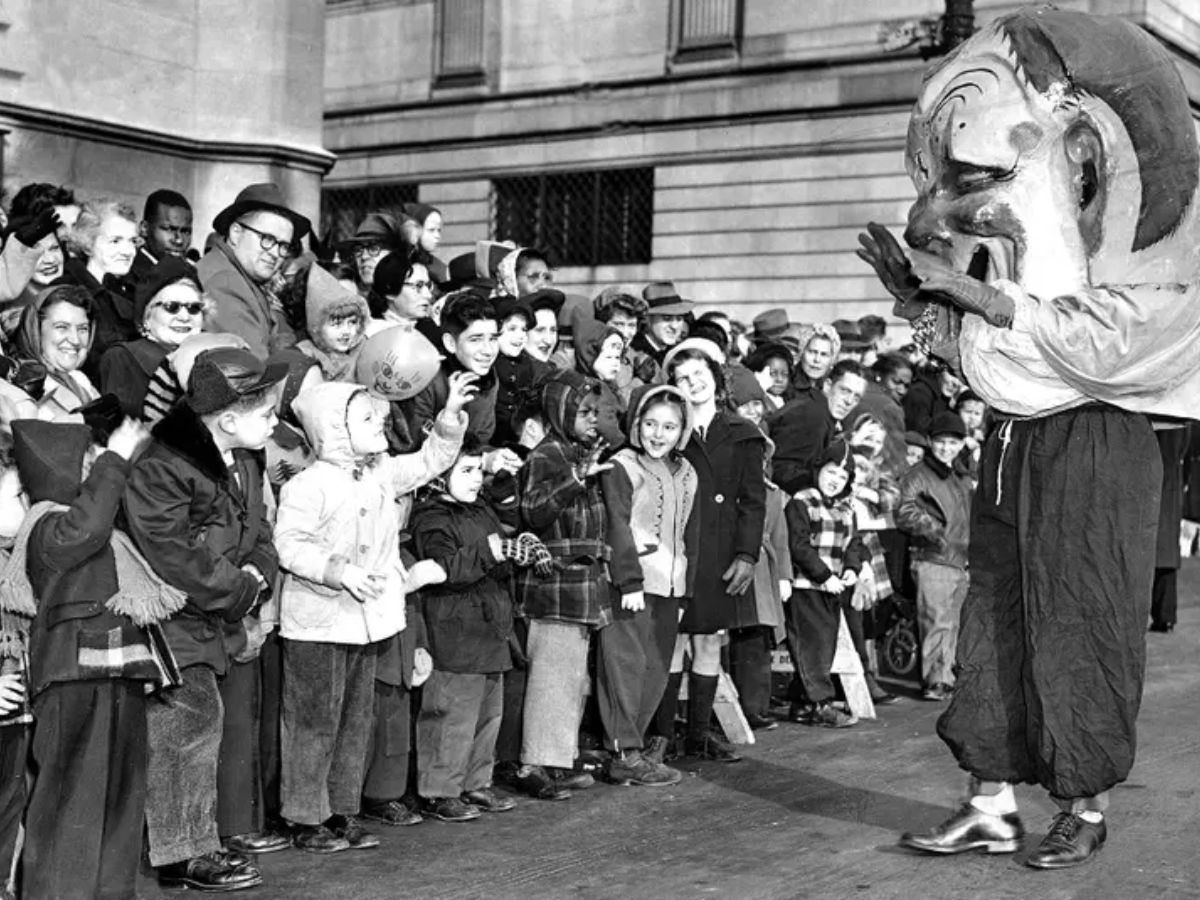
Source: GEORGE TORRIENY DAILY NEWS ARCHIVE VIA GETTY IMAGES
Celebrating the parade’s 20th anniversary in grand style, Macy’s introduced a host of new character balloons and floats that year. Notable additions included the Baseball Player, the Panda, Popeye, and Olive Oyl, and The American Eagle. Furthermore, that year, the classic 1947 film Miracle on 34th Street was shot during the parade. That’s when the parade became a more prominent part of American culture, as footage from the event was prominently featured in the heartwarming holiday classic.
But in 1948, something special happened – the Macy’s Thanksgiving Day Parade made its TV debut on CBS. This was a big deal because it happened at a time when television networks were just beginning to broadcast shows regularly.
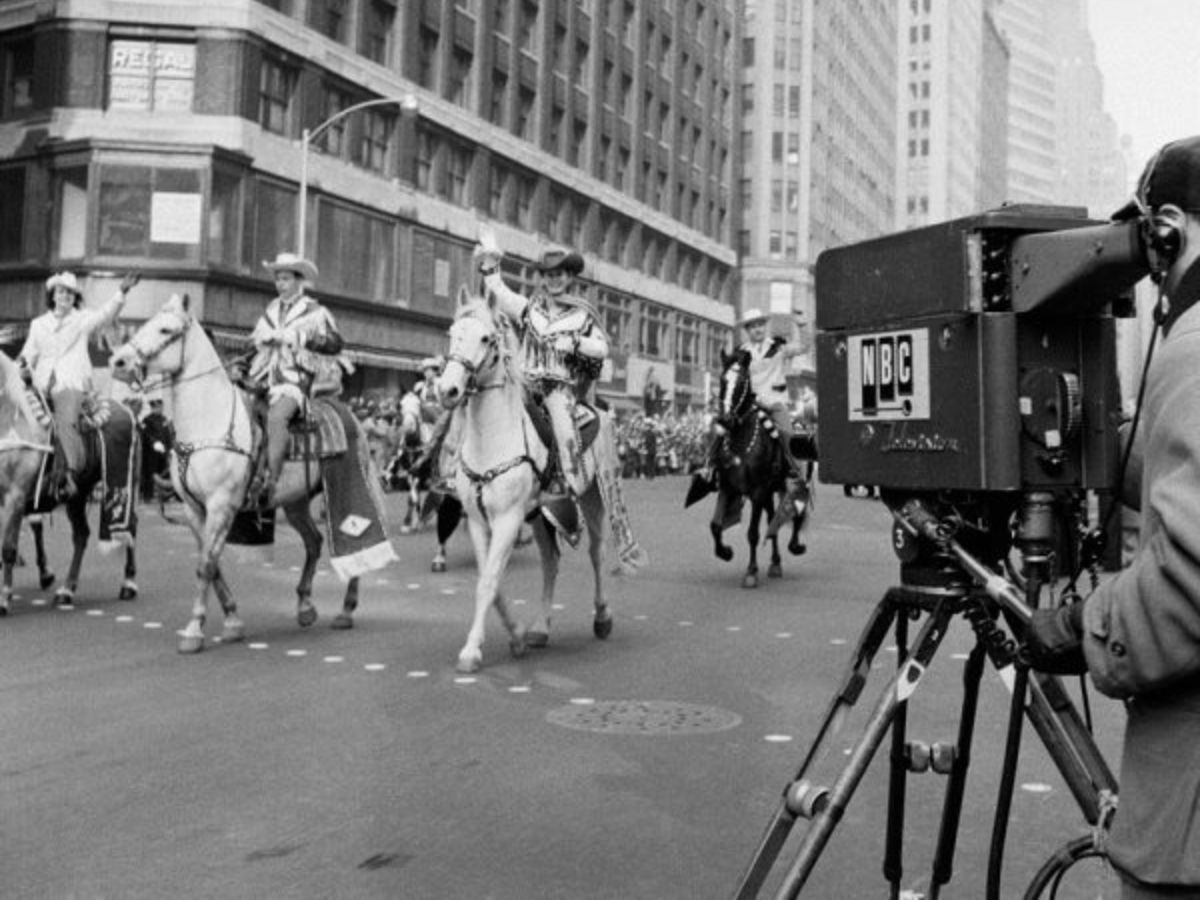
Source: eyesofageneration.com / Macy's
The parade’s appearance on CBS allowed more people across the country to enjoy it, turning it from a local tradition into something loved by families all over the United States.
1949 - 1960: Macy’s Thanksgiving Celebrity Extravaganza
The 1950s witnessed the transformation of Macy’s Thanksgiving Day Parade into a televised extravaganza and solidified its status as a beloved American tradition. The combination of entertainment, star power, and beloved characters had made it a Thanksgiving staple in households nationwide.
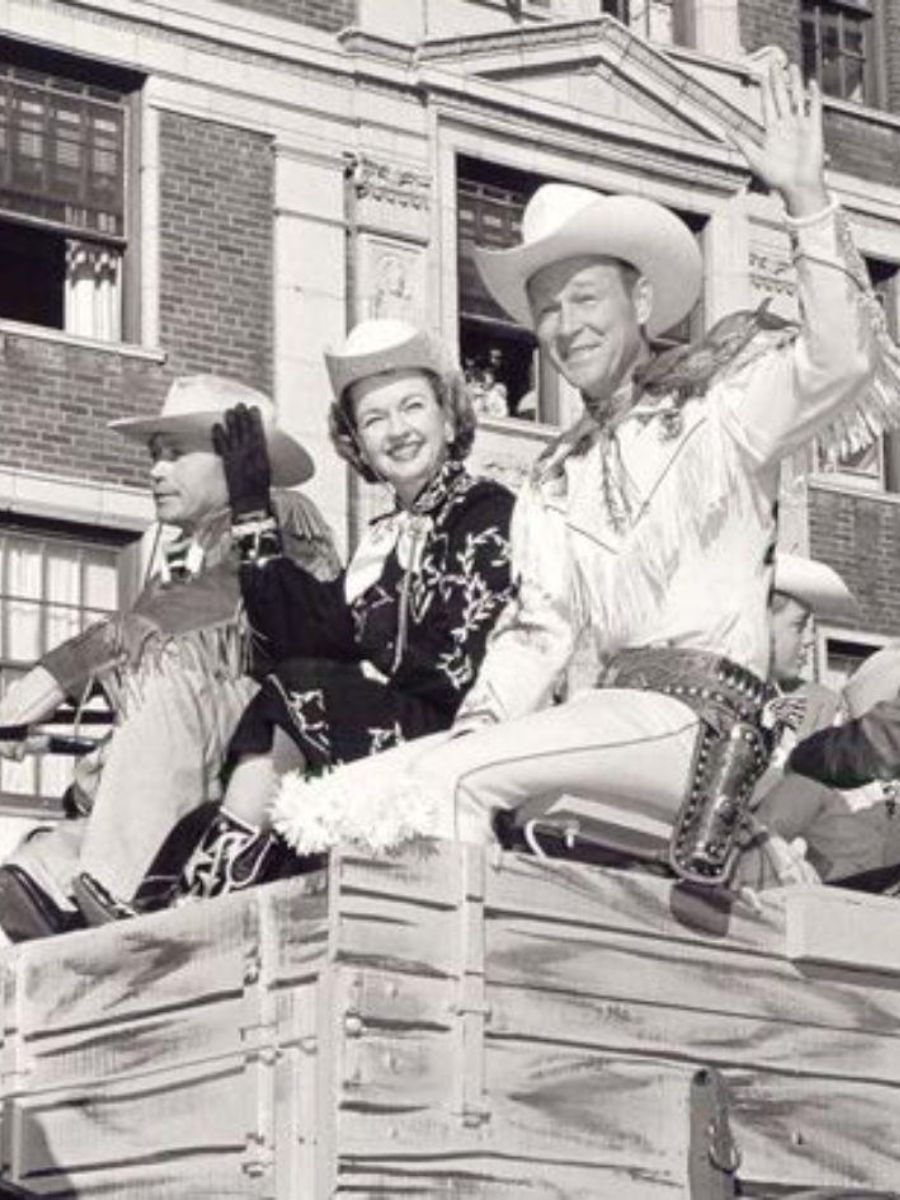
Source: Pinterest
As the parade gained popularity on television, it attracted more personalities. Notable celebrity appearances by Shirley Temple, Buffalo Bob Smith, Roy Rogers, and Dale Evans increased the parade’s viewership. Additionally, in 1952, NBC took over the broadcast, significantly broadening its reach and impact.
1952 brought about another innovative marketing tactic. Jackie Gleason’s participation was timed with the launch of his own television show. This signaled a turning point as TV stars started leveraging the parade to promote their work. Celebrities adorned these floats, allowing them to shine in the spotlight. For example, Connie Francis portrayed Cinderella in 1959, enhancing the parade’s magic.

Source: chipawayproductions / Macy's Parade
In 1957, the Radio City Rockettes, a renowned precision dance company, debuted in the Macy’s Thanksgiving Day Parade. They have since become a beloved and iconic part of the annual event, performing as the last pre-parade act to grace the streets with their high-kicking, synchronized routines. This era also witnessed its share of balloon mishaps, with Mighty Mouse battling strong winds in 1956 and Popeye’s Hat collecting rainwater in 1957, showering the crowd with unexpected cold water.
1961-1969: Shaping Modern Traditions with Macy’s Thanksgiving Day Parade
The 1960s marked a time of profound societal and cultural change in the United States. The Macy’s Thanksgiving Day Parade mirrored these shifts, featuring influential balloons like Superman, Bullwinkle The Moose, Snoopy, Popeye, and Mighty Mouse gracing the sky.
In 1961, NBC extended the parade’s TV broadcast to two hours, offering comprehensive coverage from start to grand finale. Lorne Greene and budding comedian Betty White began hosting in 1963, infusing star power and entertainment until 1971.

There was also a growing emphasis on Broadway and musical theater’s influence on American culture. As a promotional effort for the movie, “The Sound of Music” introduced a float in the 1964 Macy’s Thanksgiving Day Parade, inspired by the “Lonely Goatherd” segment.
McDonald’s debuted in the Macy’s Parade in 1965 as a strategic move for the fast food industry. The cheerful float showcased Ronald McDonald and other characters, adding an element of fun and familiarity to the parade, resonating with children and adults alike.
In 1968, the iconic Peanuts character Snoopy debuted as a giant balloon in Macy’s Parade, becoming one of the longest-lasting balloon characters in its history.

Snoopy’s instant and lasting popularity secured his place in the parade for over 40 years, establishing him as a cherished Macy’s Parade icon.
1970-1979: Harmonizing with the Times
The 50th anniversary of Macy’s Thanksgiving Day Parade in 1976 was a massive celebration, with a record number of participants and spectators. It was a testament to the parade’s enduring popularity and cultural significance.
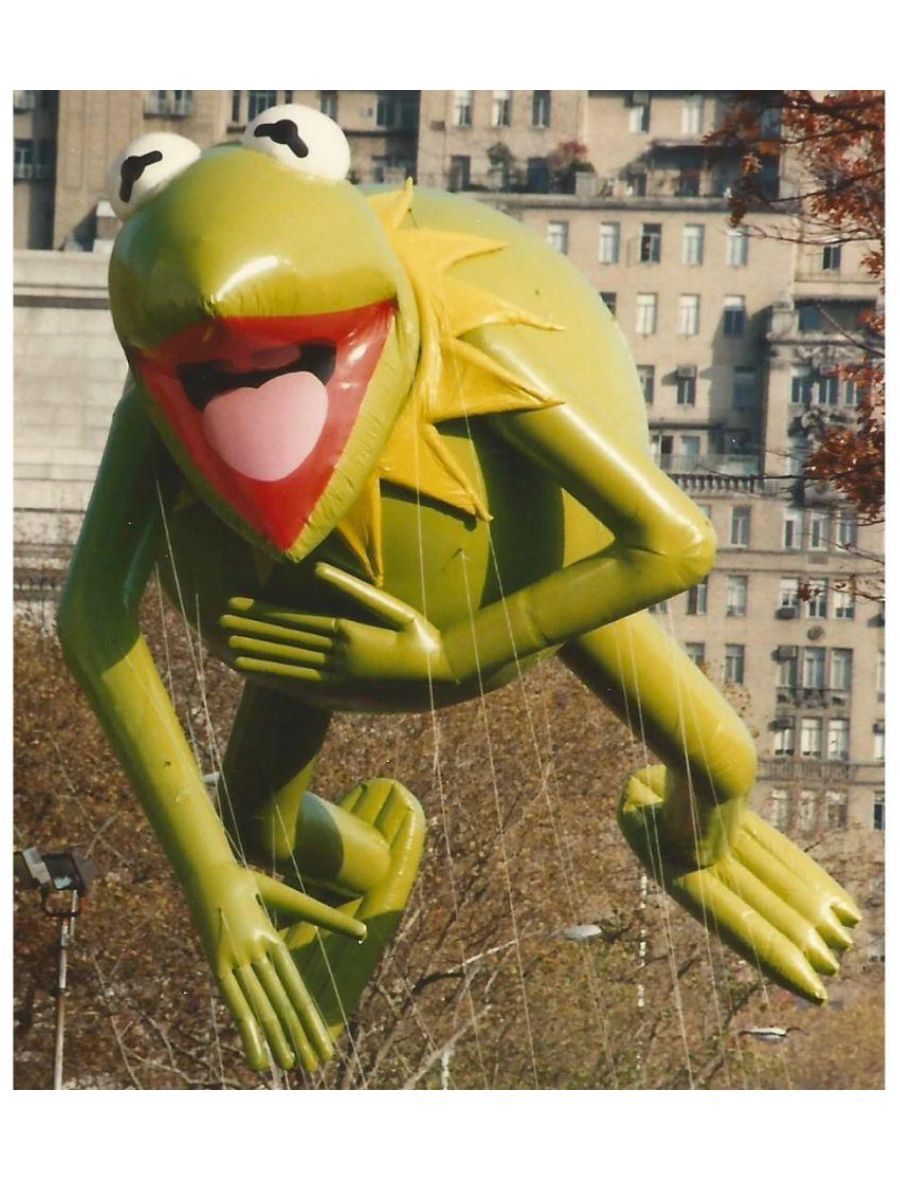
Macy’s showcased Kermit the Frog in 1977, one of the most celebrated balloons in the parade’s history. Kermit’s debut marked another milestone in the tradition of introducing beloved characters.
Macy’s began incorporating popular musicians to capture the spirit of the times and resonate with the music culture of the 1970s. These artists brought their unique sounds and charismatic performances to the grand event, enchanting the live audience and the millions of viewers watching from home.
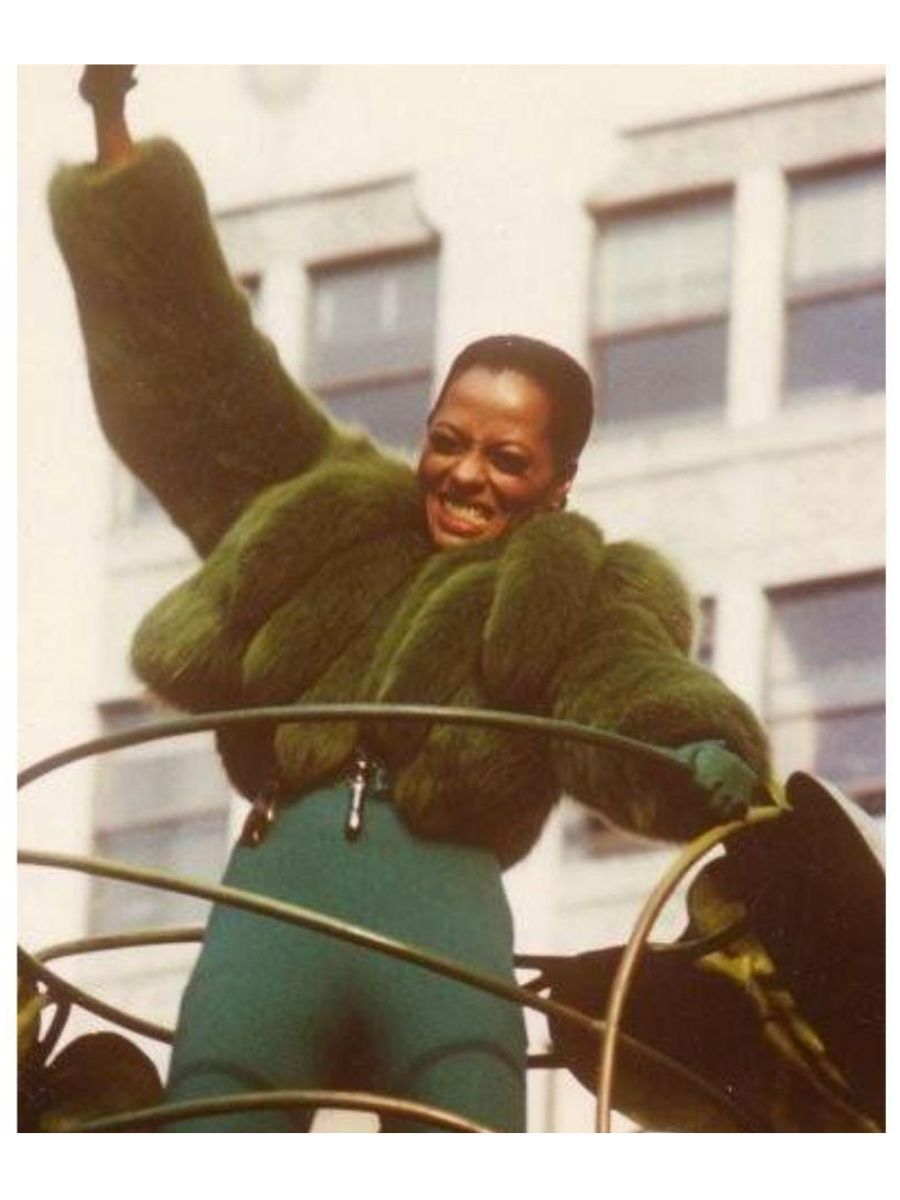
In 1979, Diana Ross, a musical legend, performed on the Big Apple float, showcasing how Macy’s Parade artists embodied the era’s diverse and vibrant music scene.
1980-1989: Macy’s Pop Culture Parades
The 80s were a dynamic era in the Macy’s Thanksgiving Day Parade’s history, characterized by a growing influence of pop culture. In 1985, Betty Boop celebrated her 55th birthday by transforming into a giant helium balloon, and two years later, Spider-Man swung into the parade. These additions demonstrated how the Macy’s parade remained in sync with the evolving interests of its audience. The parade captured the essence of pop culture icons and brought them to life in a larger-than-life format. In 1985, Snoopy appeared in the most elaborate and imaginative form as the “Aviator Snoopy” balloon. This introduction was a testament to the parade’s commitment to pushing the boundaries of balloon design and captivation.
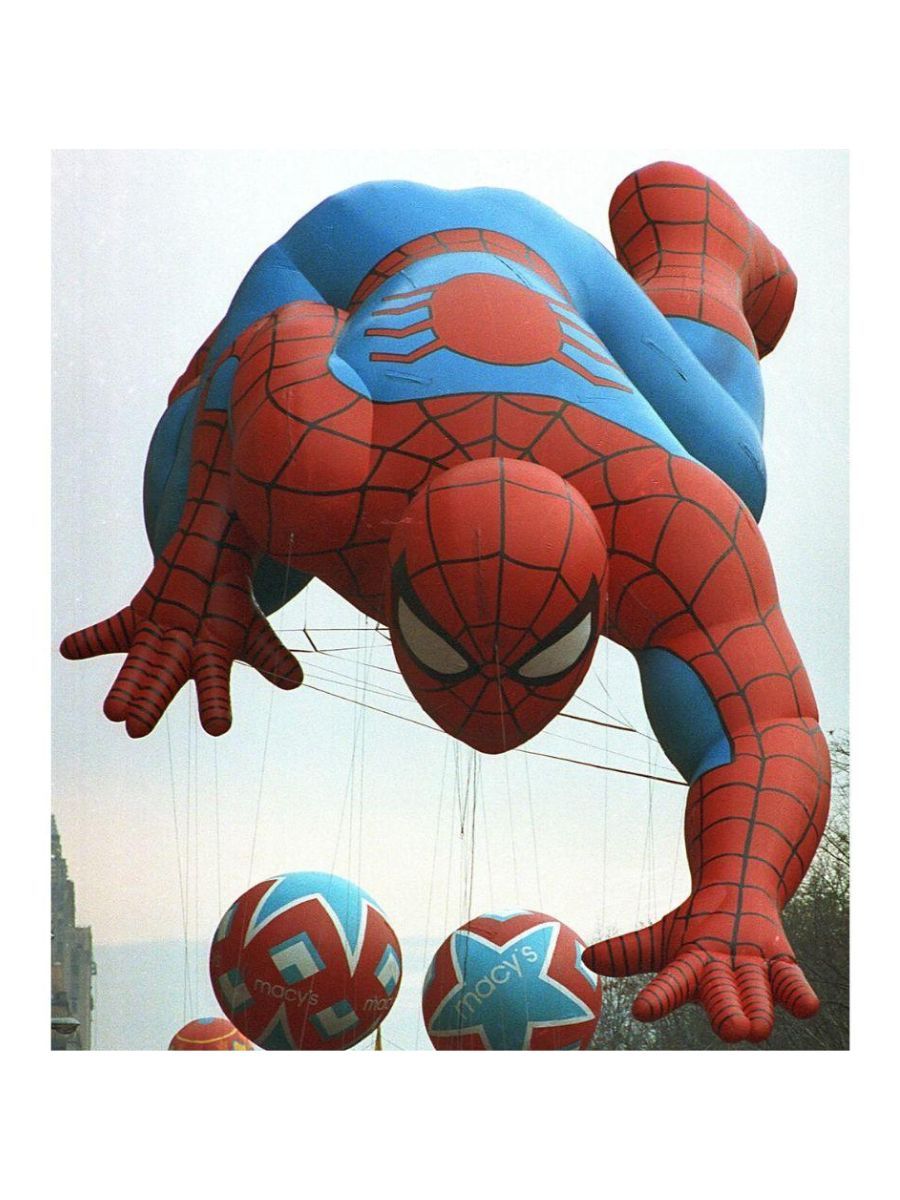
The 1980s marked a transition in the manufacturing of Macy’s Parade balloons. The original manufacturer, Goodyear Tire and Rubber Company, concluded their balloon production in 1980. Subsequently, from 1980 to 1983, Kemp Balloons, Inc. assumed the responsibility for crafting the inflatable giants. Then, in 1984, Raven Aerostar took on the task, continuing to construct balloons for the Parade for several decades until 2019.
Towards the end of the decade, there was also a change in Macy’s Thanksgiving Day Parade advertisements. There was a notable shift towards vibrant and eye-catching colors in the promotional materials, aligning with the growing significance of color printing technology.
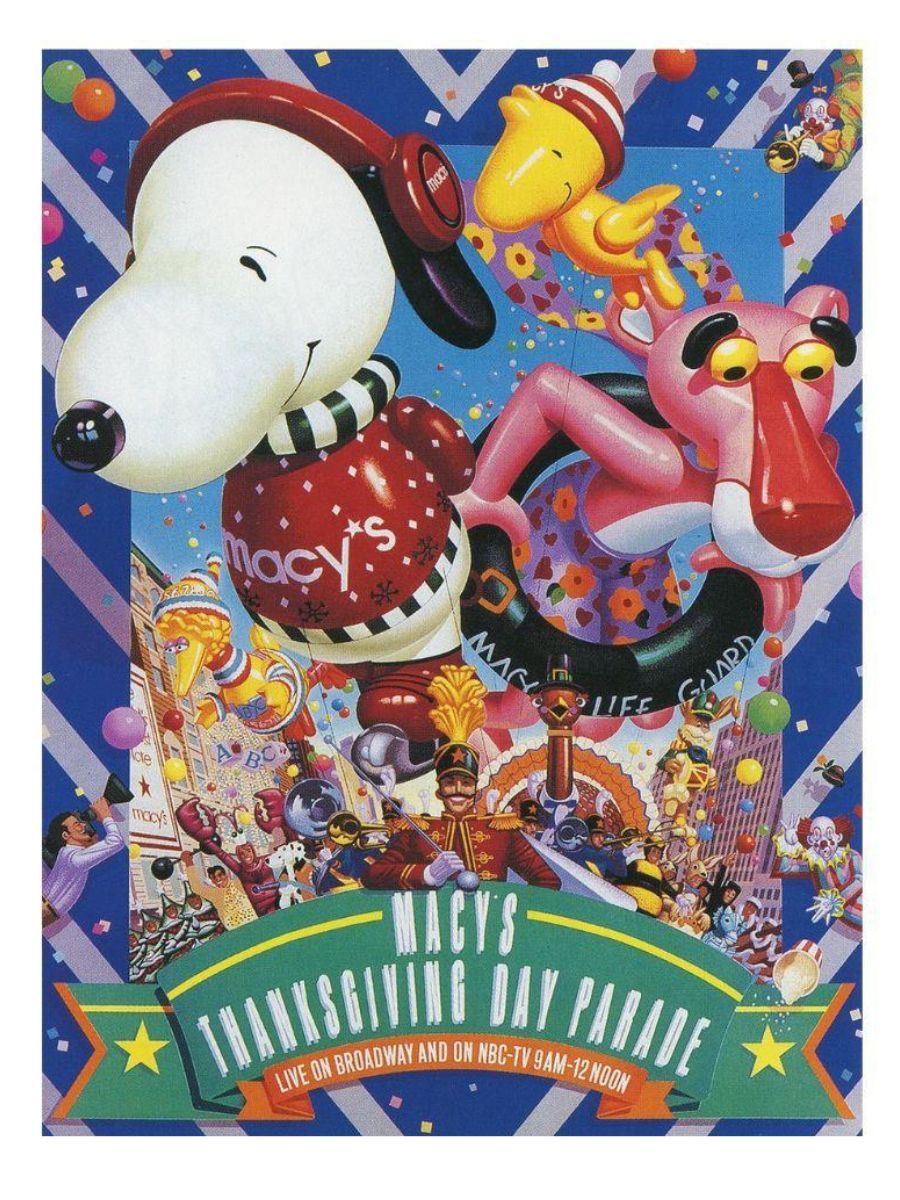
Pop culture characters also made their way into these colorful ads, adding to the parade’s visual appeal and reflecting the cultural trends of the time.
1990-1999: A Global Phenomenon
The 1990s saw many new iconic balloons like Bart Simpson in 1990, Babar in 1992, The Cat in The Hat in 1994. The parade continued to promote newly introduced characters, harnessing their popularity to boost brand-new feature films, spanning cartoons, comics, and live-action movies.
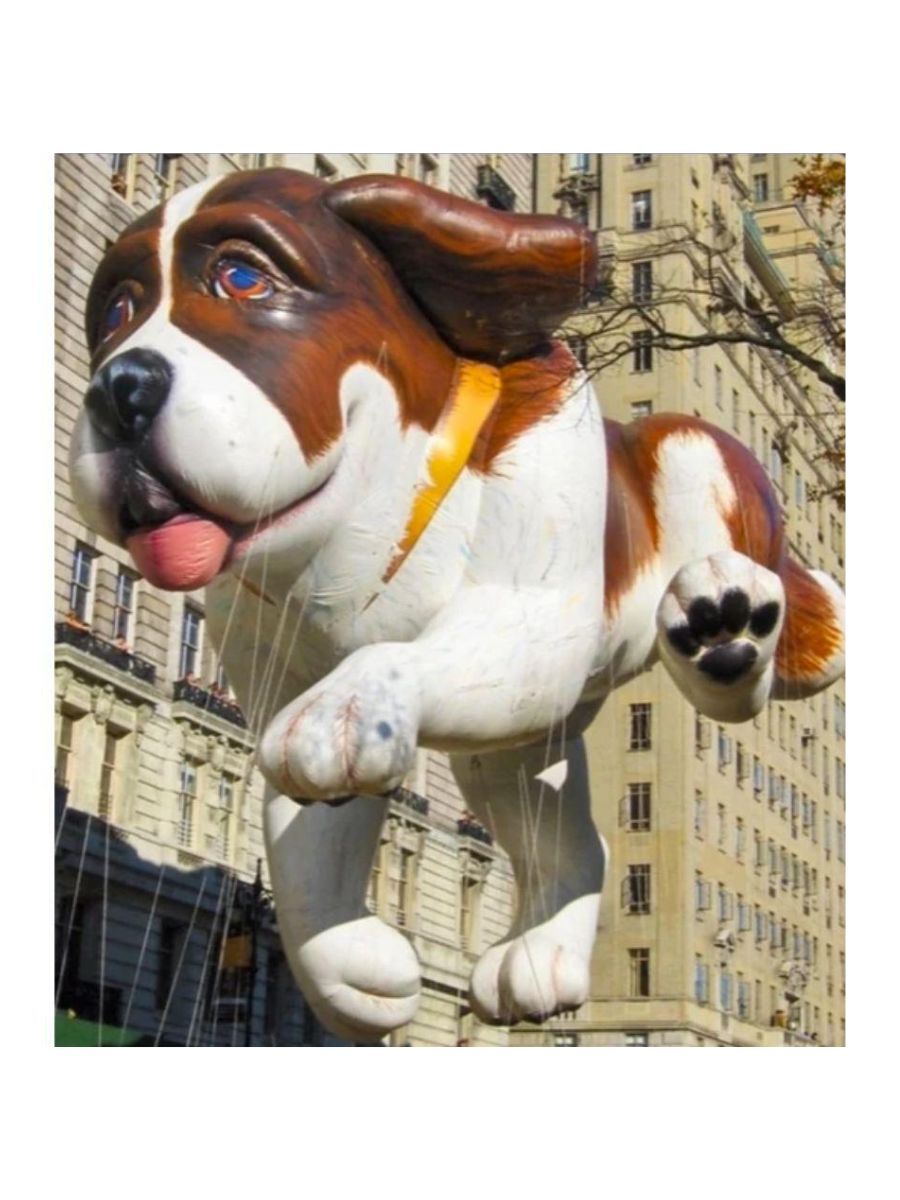
Notable instances included Beethoven’s balloon, promoting a family comedy film in 1993, and Babe’s appearance in 1998, promoting the sequel to the 1995 film. The late 1990s marked a period of further internationalization, introducing foreign character balloons such as Rugrats and Sonic The Hedgehog. This move emphasized the parade’s growing global engagement.
The Macy’s Thanksgiving Dat Parade retained its role as a cultural showcase during the 1990s. Renowned celebrities such as Christina Aguilera and 98 Degrees performed, contributing an exciting layer of star power to the 90s events.
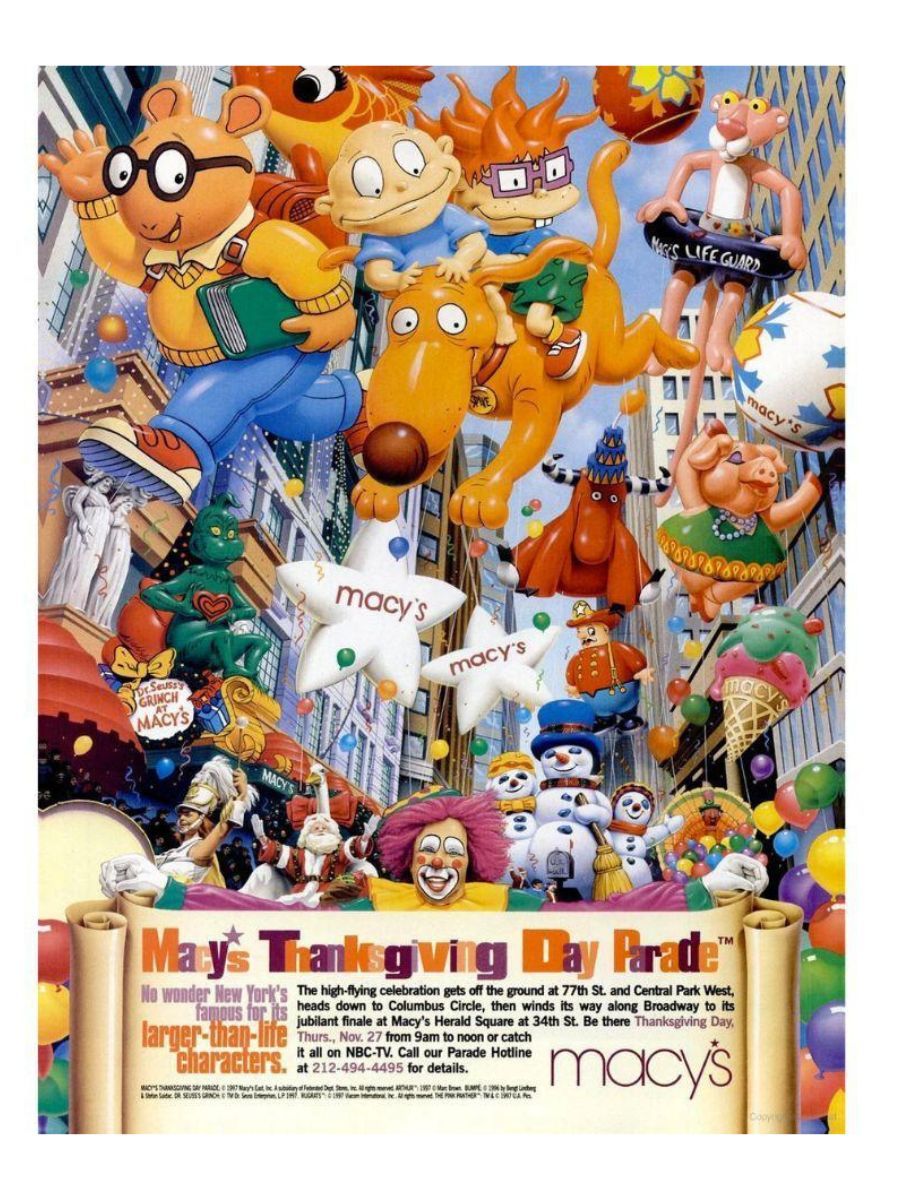
As the decade ended, the parade transcended its American origins and became a global phenomenon. The appearances by international characters and artists made it a beloved event for audiences of all backgrounds.
2000-2009: Digital Age and Giant Balloons
The parade maintained its appeal throughout the new millennium with character balloons like Pikachu, Big Bird, and SpongeBob SquarePants. New balloon technologies made these characters even more spectacular, capturing the imagination of spectators and viewers alike.
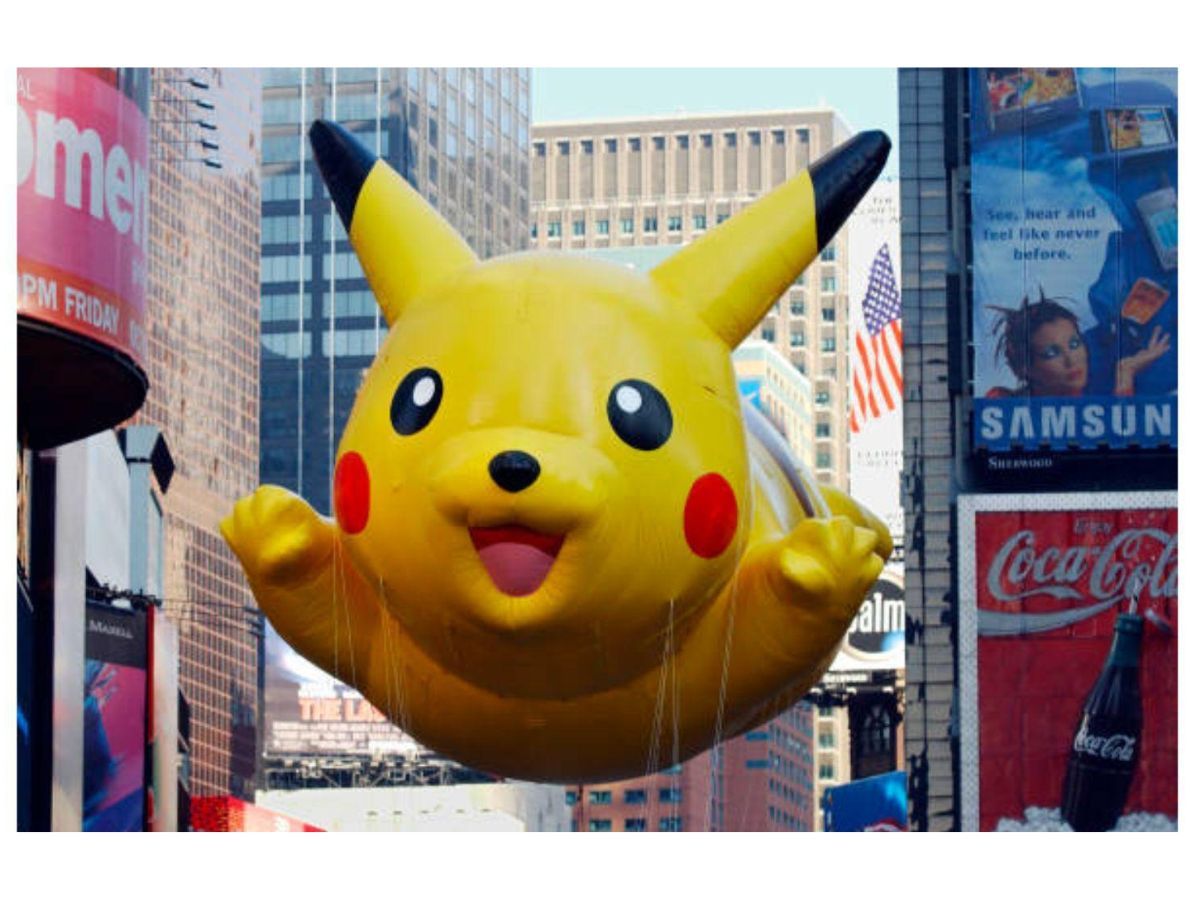
The giant balloon tradition continued by introducing characters like Shrek, Horton the Elephant, Smurf, and the Pillsbury Doughboy. These balloons maintained the tradition of introducing new, popular characters, ensuring the parade’s relevance and appeal.
The early 2000s continued to shine with big names from the music world and Broadway. Famous faces like Aaron Carter, Hilary Duff, and the hit musical “Wicked” cast appeared, turning into parade highlights.
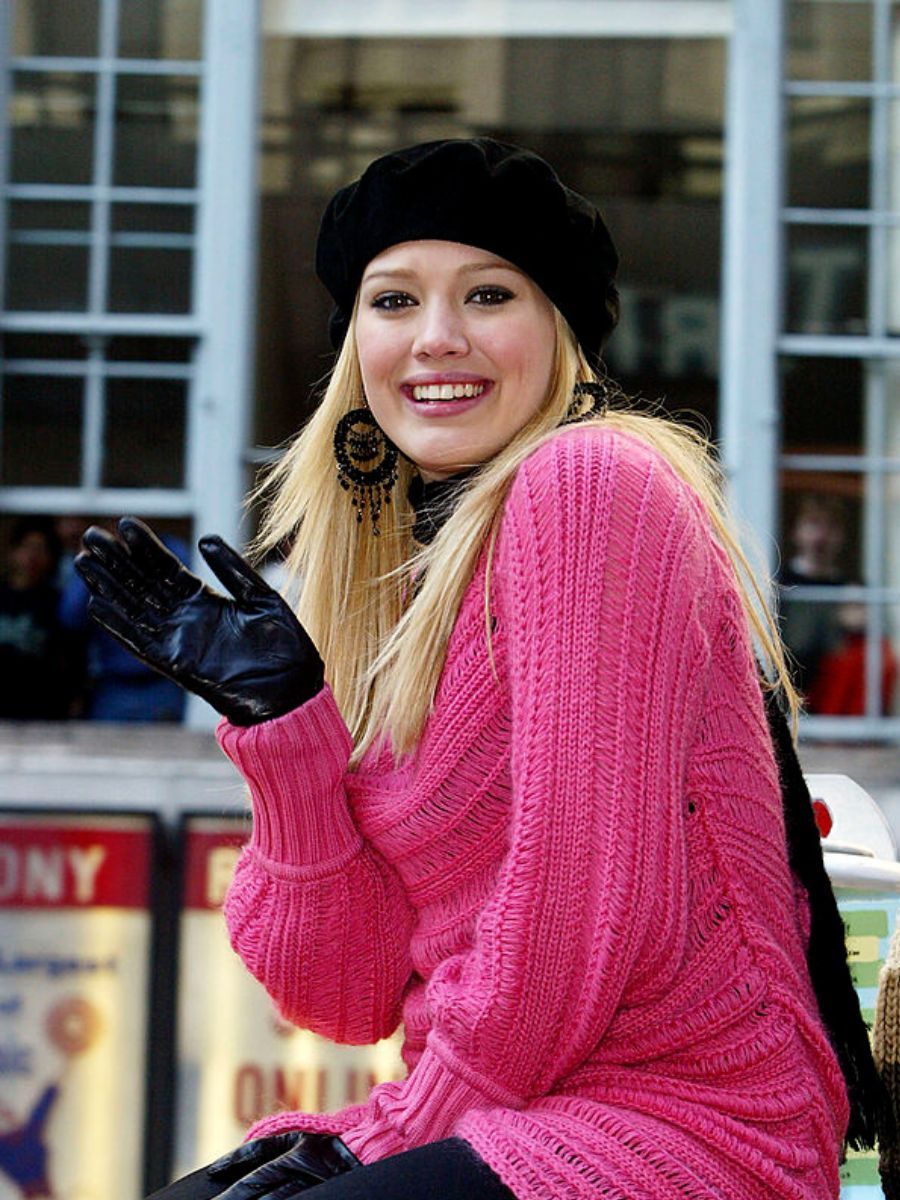
Source: Matthew Peyton/Getty Images
This proved that mixing pop music and beloved Broadway shows was a surefire way to win the crowd’s affection. Audiences went wild for it both at the parade and at home and it proved to be a strong marketing technique for the ages.
2010- 2019: Milestones and Modernization
The 2010s witnessed remarkable growth for the Macy’s Thanksgiving Day Parade, capturing audiences with exciting developments. In 2011, the NHL introduced its float, marking the beginning of a decade-long presence that celebrated the parade’s convergence of sports and pop culture.
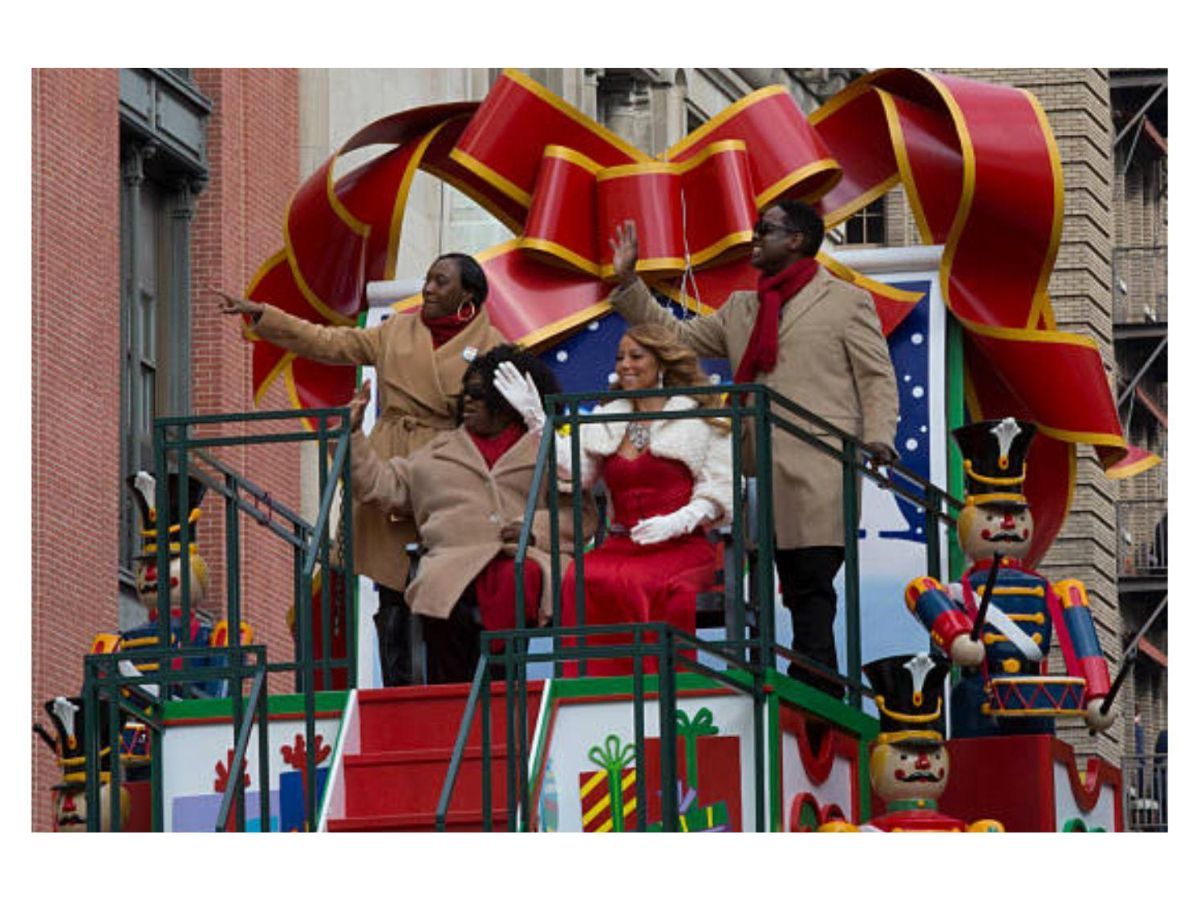
Moreover, the parade’s vast celebrity portfolio expanded with more magical performances. Notably, Mariah Carey graced the event with her iconic show “All I Want for Christmas Is You” in 2015, donning her Mrs. Claus attire, adding a touch of glamour.
A year later, for the parade’s 90th anniversary, the cherished Felix the Cat giant balloon made a triumphant comeback, stirring feelings of nostalgia and underscoring the parade’s lasting heritage.
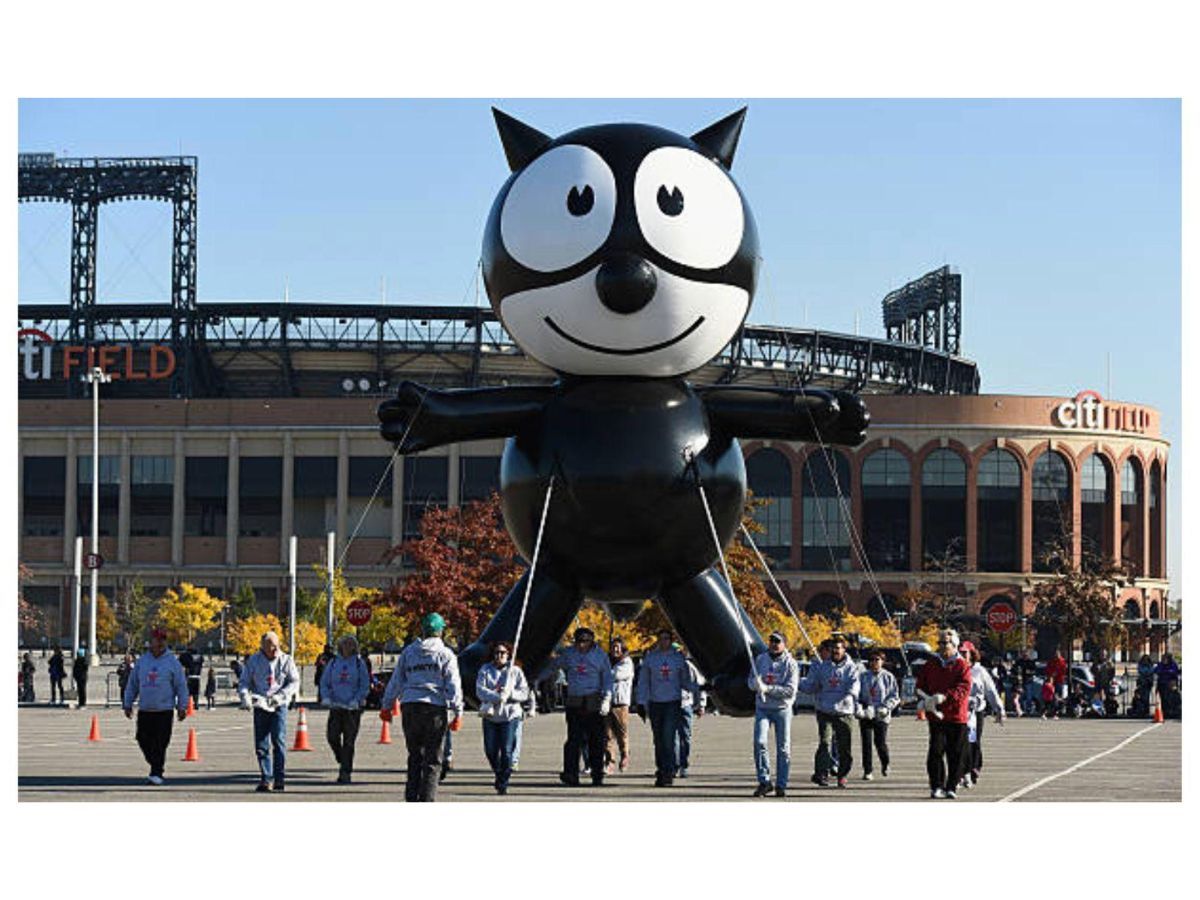
The 2010s also marked the parade’s transition into an innovative platform for product advertising. For example, the 2010 “Kool-Aid Man” balloonicle and the fourth rendition of Ronald McDonald’s balloon in 2015 illustrated the parade’s ability to attract advertising giants.
2020 - Present: Adapting to a New World
In response to the COVID-19 pandemic, the Macy’s Parade broke from tradition. It replaced the usual street crowds with a TV-only spectacle featuring pre-recorded performances and a select group of participants. However, new character balloons like “Boss Baby” and “Red Titan” debuted, showcasing the tradition of introducing new balloons even in challenging times.

In 2021, a glimmer of positivity emerged as the 95th Macy’s Thanksgiving Day Parade witnessed the return of the familiar 80-100 handlers guiding the giant helium balloons, absent for over a year due to the pandemic.
The following year, the parade’s revival continued, featuring 16 giant character balloons, 28 floats, 40 novelty and heritage inflatables, over 700 clowns, 12 marching bands, 10 performance groups, and musical stars.
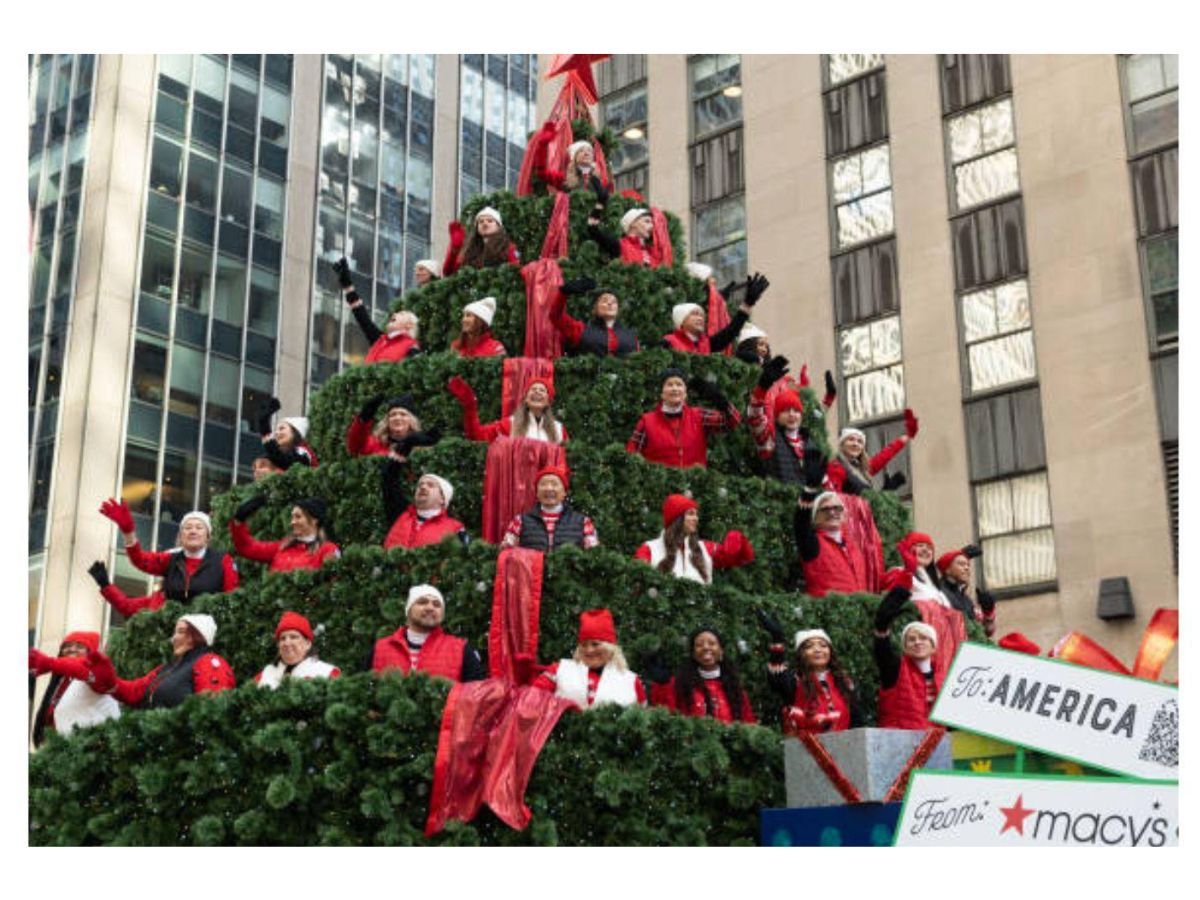
Mariah Carey opened the holiday season with her iconic “All I Want for Christmas Is You” performance followed by Santa Claus’ arrival. The TV broadcast of the parade was a big hit, with over 27.7 million viewers, making it the most-watched Parade telecast in five years.
The Timeless Magic of the Macy's Thanksgiving Day Parade
The Macy’s Thanksgiving Day Parade has seen impressive growth throughout its history. In its early years, it attracted around 250,000 in-person spectators. However, by 2022, this number had skyrocketed to 3 million attendees.
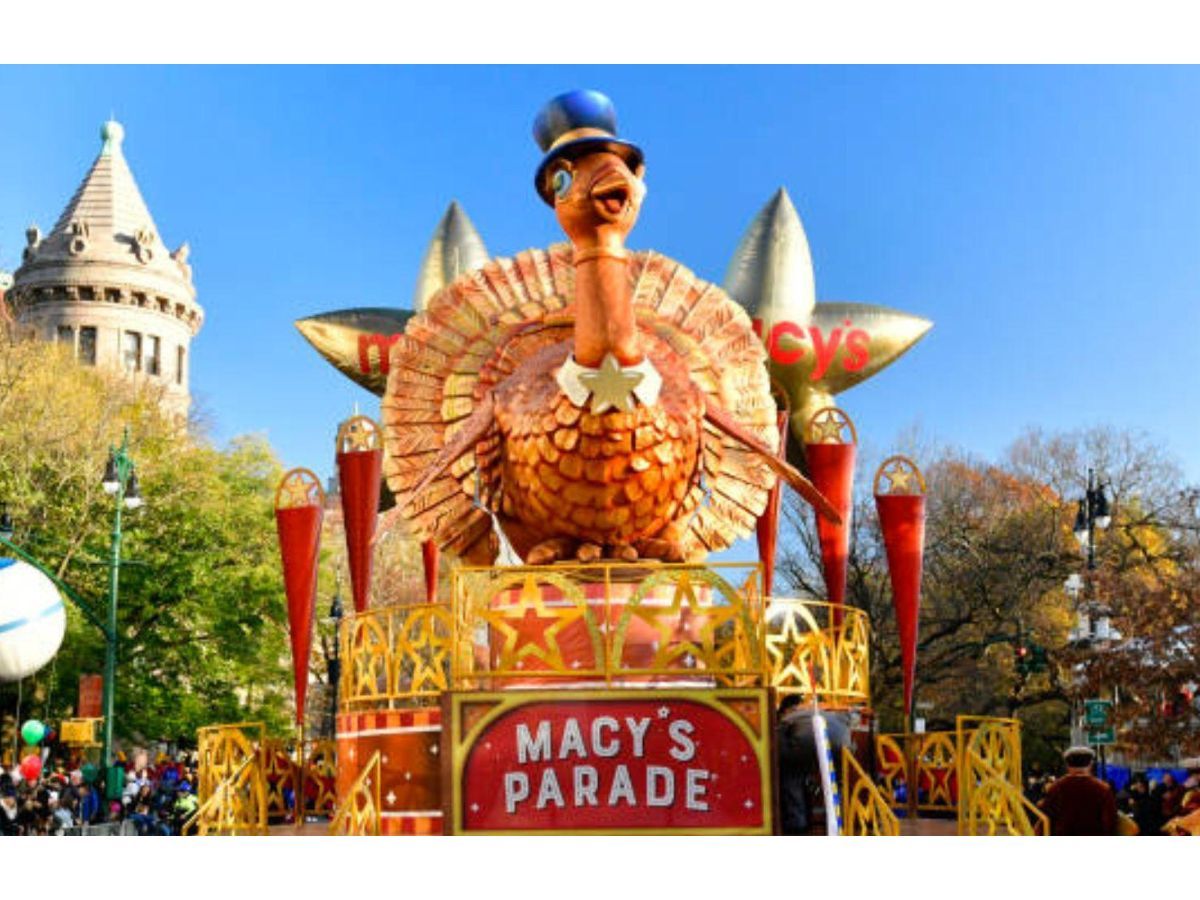
Keep in mind, all these festivities come at a significant cost, with the parade’s annual expenses and assets totaling over $13 million. Astonishingly, crafting a single balloon for the parade carries a price tag of $510,000.
Since its inception in 1924 as a brilliant marketing strategy for the Macy’s department store, the Macy’s Thanksgiving Day Parade has evolved into a global spectacle adored by millions.
The parade has conquered adversity through war, economic challenges, and pandemics, emerging with renewed creativity each time.
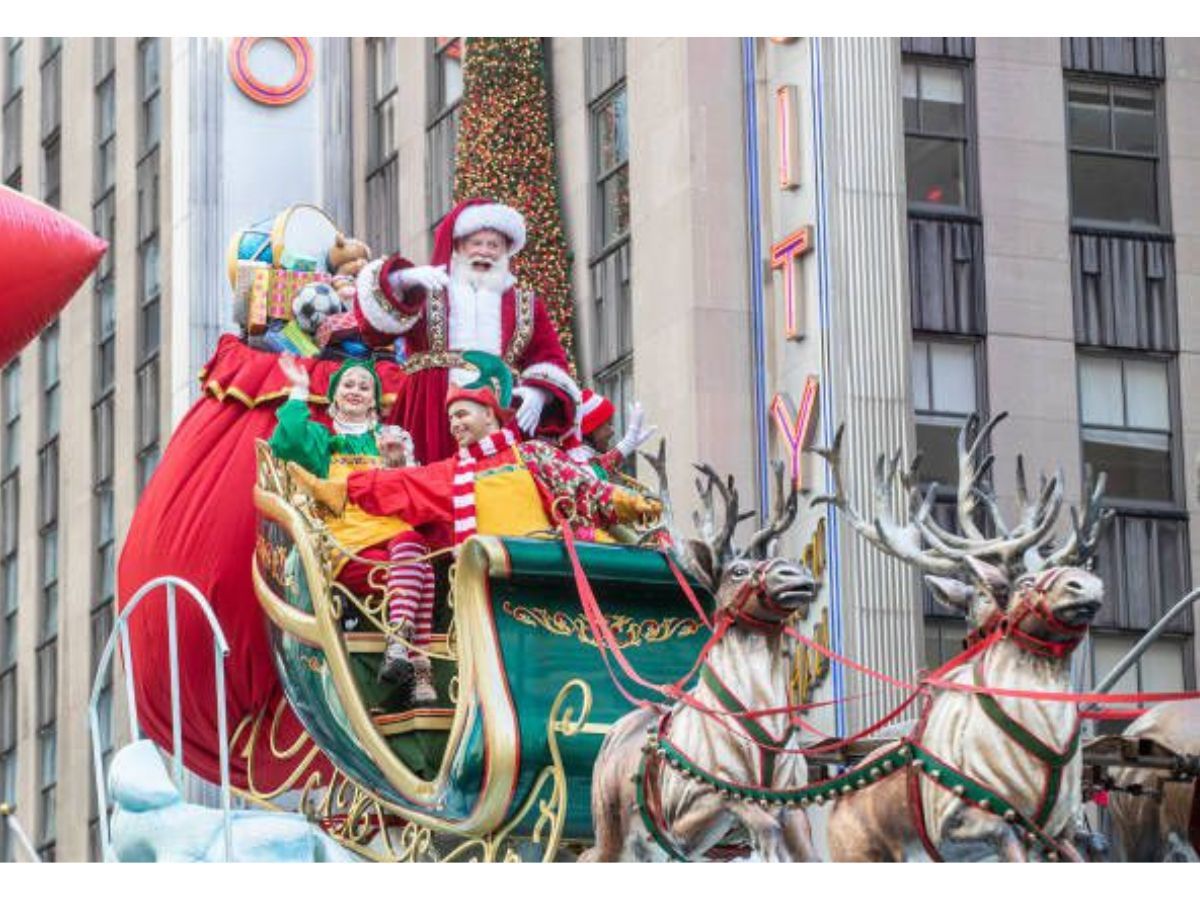
As a symbol of the holiday season, it unites people in celebrating the enchantment of giant balloons, magnificent floats, and the joy of togetherness. This enduring American tradition, much like the timeless magic of Santa Claus, promises to inspire and enchant generations to come. It also stands as an everlasting testament to the indomitable spirit of Macy’s, truly capturing the enduring sparkle of the season.
